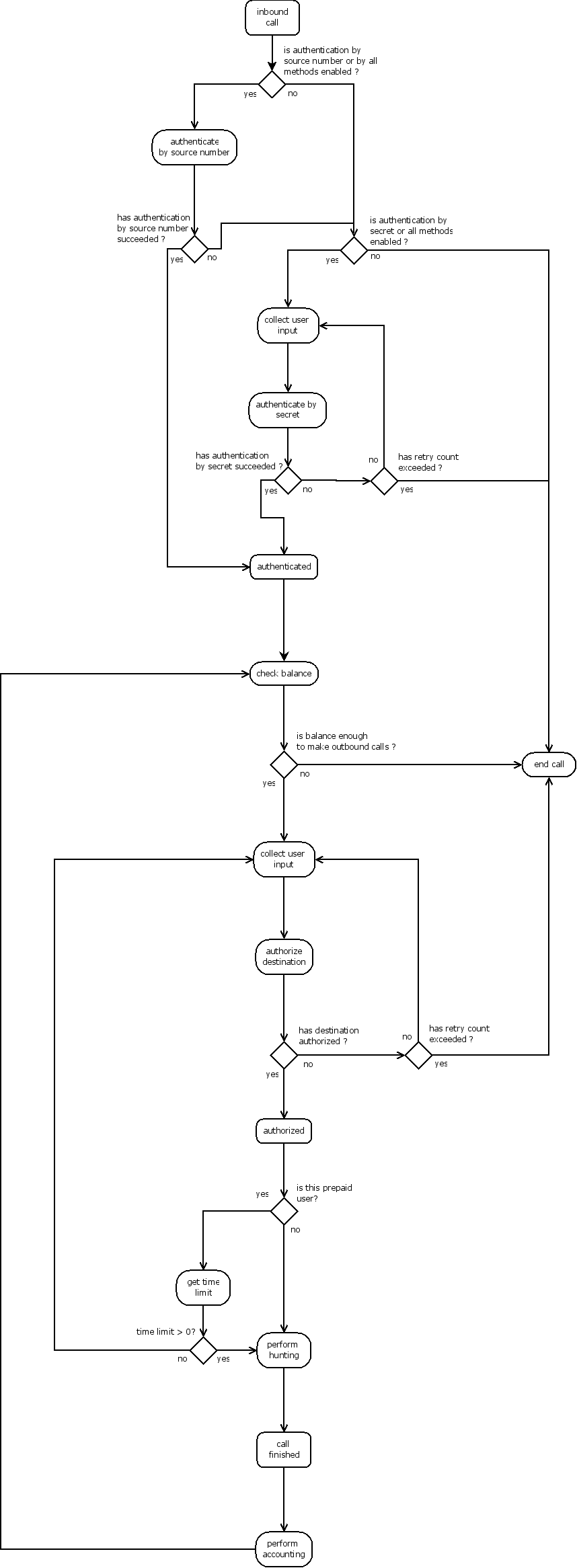
System uses Asterisk capabilities to provide the Calling Cards service with real-time billing.
In the obsolete implementations this was done using cisco equipment with TCL scripts in it. Now you don't have to buy
expensive hardware, because whole calling cards service has been implemented purely in software!
Following scheme demonstrates principles of work of the calling cards service in our understanding:

All you need fir implementation of the IVR calling cards service is the PSTN<->VOIP gateway which is rather cheap when compared
with cisco IVR engines.
Streamco Smartswitch is responsible for:
Billing happens immediately after each call ends. Operator can see billed calls immediately after they actually end.
Voice prompts are optional and can be flexibly disabled. Streamco Smartswitch has voice prompts for providing calling cards services in its basic setup, thus you don't need to record them by yourself.
Operation diagram

Business Idea.
Let's suppose we have our company named "InternationalCalls".
We have been assigned a number of 2396767 by our telco named "Telco". And we use this number for providing a Calling Cards services for our customers. Telco has VoIP gateway with SIP support with IP address of X.X.X.X.
Also we have signed a contact for international calls with VoIP provider "GreatProvider". His gateway uses H323 and it has IP address Y.Y.Y.Y.
We have produced a number of cards and have assigned a secret (pin) for each of them. Then we sold these cards to our customers (users) and want them to be able to make international calls using our access server and access number of 2396767.
For the sake of simplicity let's suppose we don't want to provide any kind of billing (although Streamco Smartswitch perfectly supports this).
In the sections below you'll find how to implement this idea (limited to a single card) using Streamco Smartswitch.
Configure Companies
Configure Terminator
Configure Call Handler
Configure Originator
Configure User Groups
Configure Cards
Check Hunting